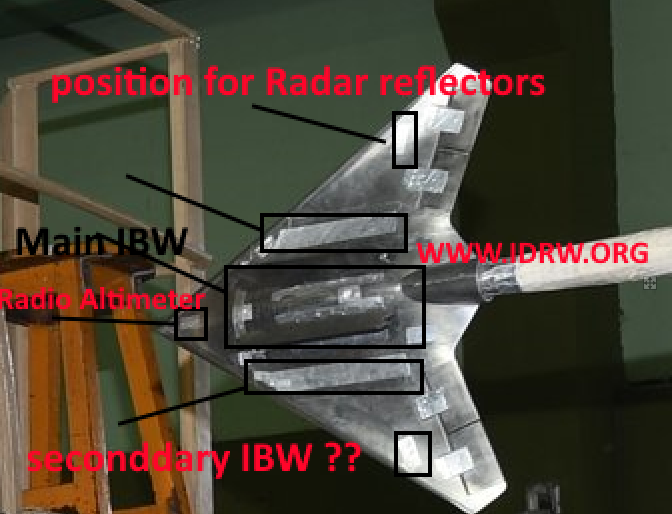SOURCE: RAUNAK KUNDE / NEWS BEAT / IDRW.ORG

In a significant development, India’s Council of Scientific and Industrial Research-National Aerospace Laboratories (CSIR-NAL) has revealed the wind tunnel testing model of the upcoming Remotely Piloted Strike Aircraft (RPSA) Autonomous Flying Wing Technology Demonstrator.
Developed by the Defence Research and Development Organisation (DRDO), this indigenous high-speed flying-wing Unmanned Aerial Vehicle (UAV) is poised to play a crucial role in India’s future defence capabilities. The DRDO’s RPSA is expected to be scaled up into a formidable 13-ton Maximum Takeoff Weight (MTOW) Unmanned Combat Aerial Vehicle (UCAV) for use by the Indian Air Force (IAF).
The unveiled wind tunnel model provides intriguing insights into the design and features of the RPSA. Notable among these is the semi-recessed engine configuration with an exhaust nozzle. The model showcases the underbelly of the aircraft, revealing a configuration that suggests the presence of two smaller internal weapons bays positioned next to the main central weapons bay. The latter, shown in an open position, boasts two sets of doors that swing open, hinting at the aircraft’s internal weaponry deployment mechanism.
A particularly intriguing detail is the speculation surrounding a potential second set of internal weapons bays, believed to be smaller payload access doors. Positioned on each side between the engine access bay and the main weapons bay, these doors could potentially house Air-to-Air Missiles for self-defence. While this remains speculative, the doors may also serve other purposes, such as maintenance access to the engines.
The RPSA is anticipated to feature an internal Active Electronically Scanned Array (AESA) radar, enhancing its capabilities for stealth and target acquisition. Positioned near the main landing gear, the aircraft could house a Radio Altimeter, contributing to its navigation and altitude measurement capabilities.
The design philosophy of DRDO’s RPSA is grounded in the flying-wing scheme, incorporating the use of advanced composite materials and stealth coatings. These elements contribute to the drone’s low-observable characteristics during flight, aligning with contemporary trends in unmanned aerial vehicle design for enhanced survivability and mission success.
NOTE : Article cannot be reproduced without written permission of idrw.org in any form even for YouTube Videos to avoid Copy right strikes. Websites doing illegal reproductions will get DCMA and Legal Notices.